Philips toys
Build a car that responses to the tone of a simple whistle or make other working gadgets you only see in spy movies? Launching your own space mission, designing for the future? It was all possible with Philips' electronic and mechanical construction kits, designed for hours of building and experimentation, fun for all aspiring engineers and technicians.
Discover your inner engineer
In 1957, Philips launches its very first in-house engineering toy: the self-screwing transistor radio, the ‘Pioneer’. The construction kits are a success and are available in Junior, Senior and Master versions. This allows the basic construction kit to be supplemented with FM receivers, speakers or stereo amplifiers.
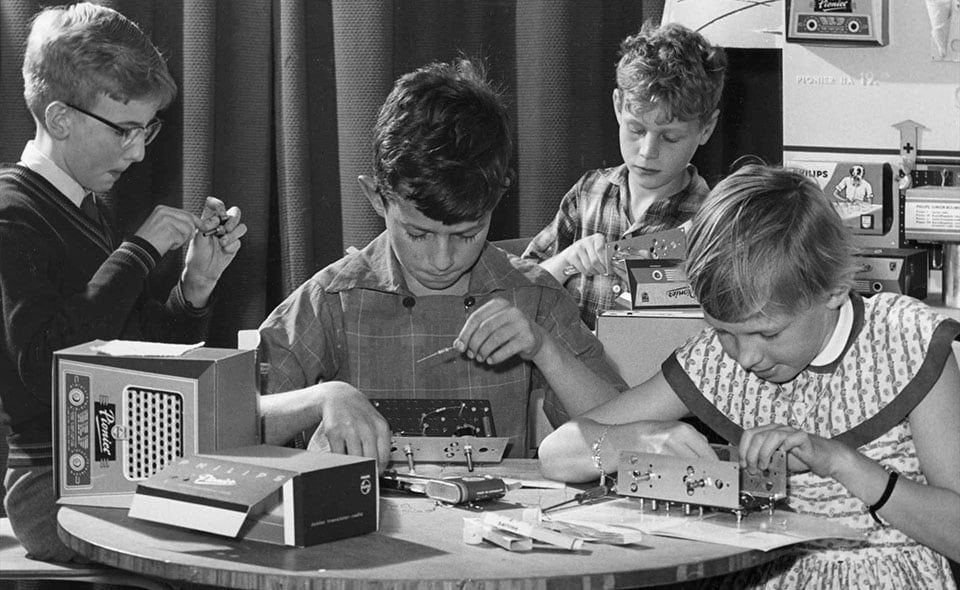
In 1963, Philips introduces experimenting kits for electronics, the ‘Electronic Engineer’ and the ‘Radio Engineer’, followed in 1965 by construction kits for mechanical engineering the ‘Mechanical Engineer’ and experimenting sets for chemistry. During development, ‘we started from the fact that we wanted to make an engineering and experimenting kit,’ say the designers, ‘like the one we used to long for in our youth, but which did not exist at that time.’ The aim is clear: to interest youth, the engineers of the future, in science and technology.
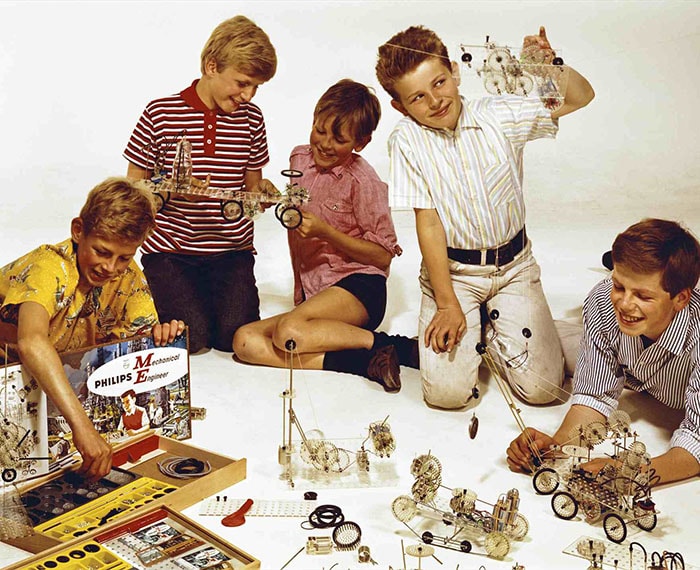
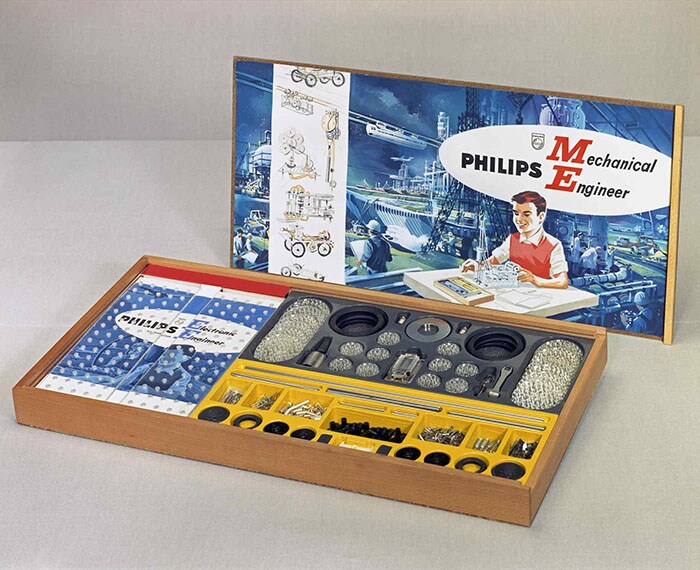
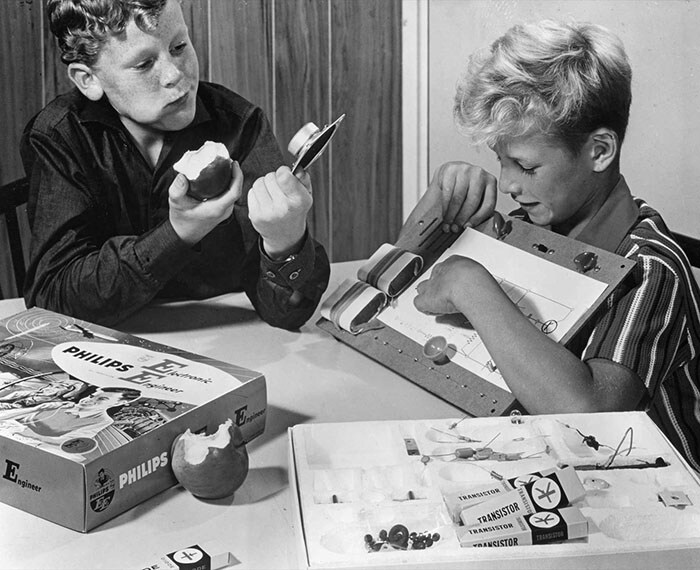
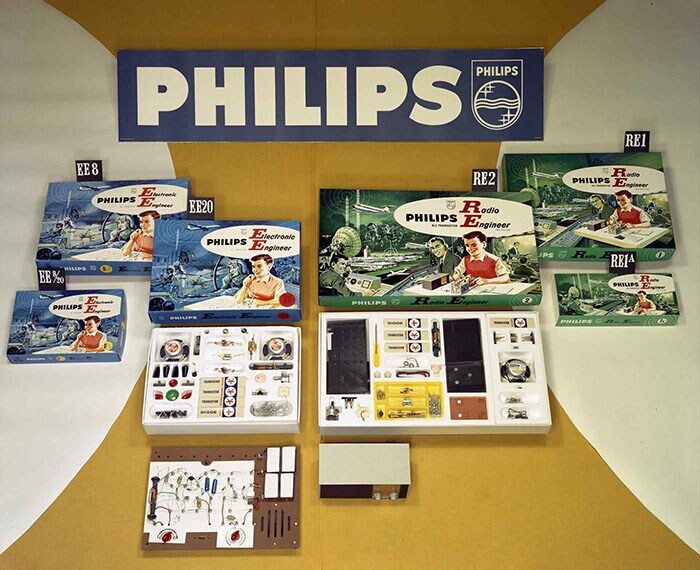
From the outset, the idea is to combine the construction kits with each other to build different complicated structures, for example, a water pump, pendulum clock, pile driver, cable car and 1001 other constructional possibilities. ‘The instruction kits are not made for a particular age, but for a particular interest. The instructions should invite you to do your own thing independently, to use your own imagination when constructing,' the makers emphasize. Everything runs on transistors and batteries, even a small electric motor is included. By the way, you can also build such a motor yourself using parts from the ‘Electronic Engineer’. Moreover, every new kit on the market responds to the latest technological developments. You can even build your own TV receiver or computer. Even themes such as mineral extraction and environmental protection are included in the educational experimentation sets.
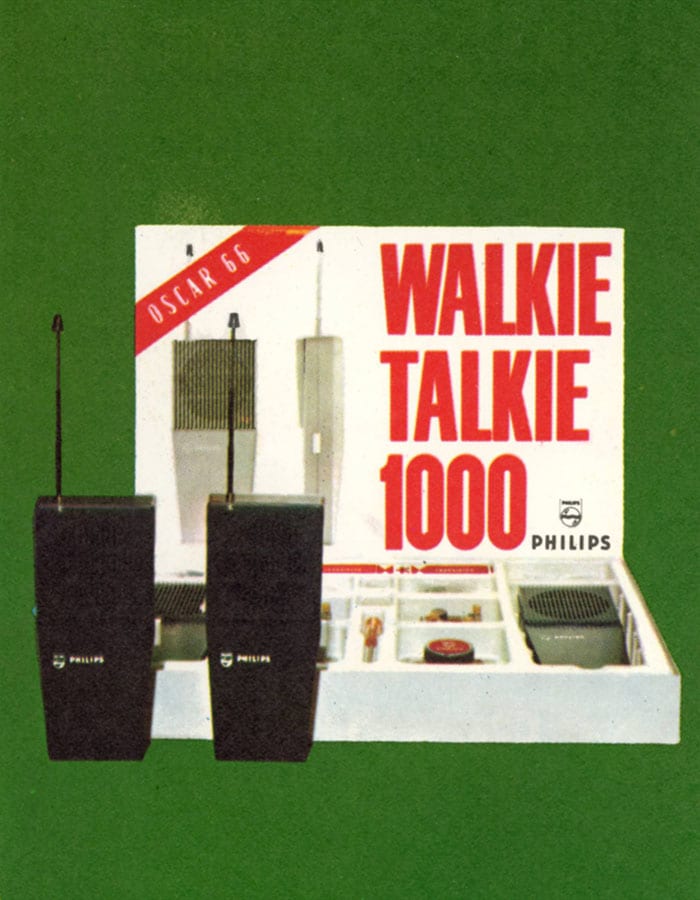
The WalkieTalkie construction kit won an ‘Oscar of toys’ in 1966.
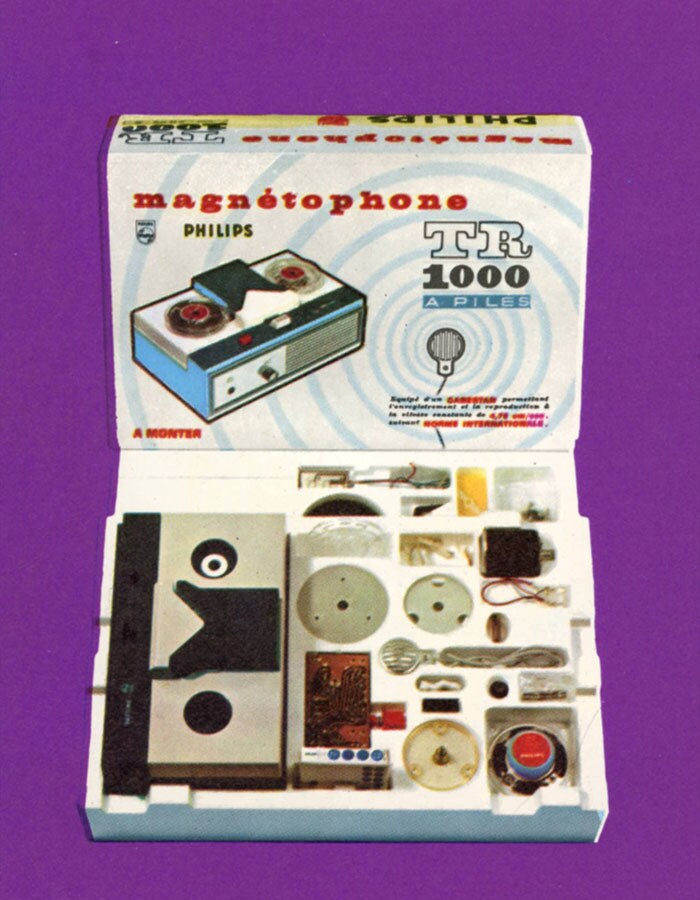
The Magnetophone TR1000 lets you record and play sound.
Philiform + a little imagination = a whole playground full of possibilities
For a broader target group, in 1968 Philips introduces Philiform, construction toys that grow with the child.
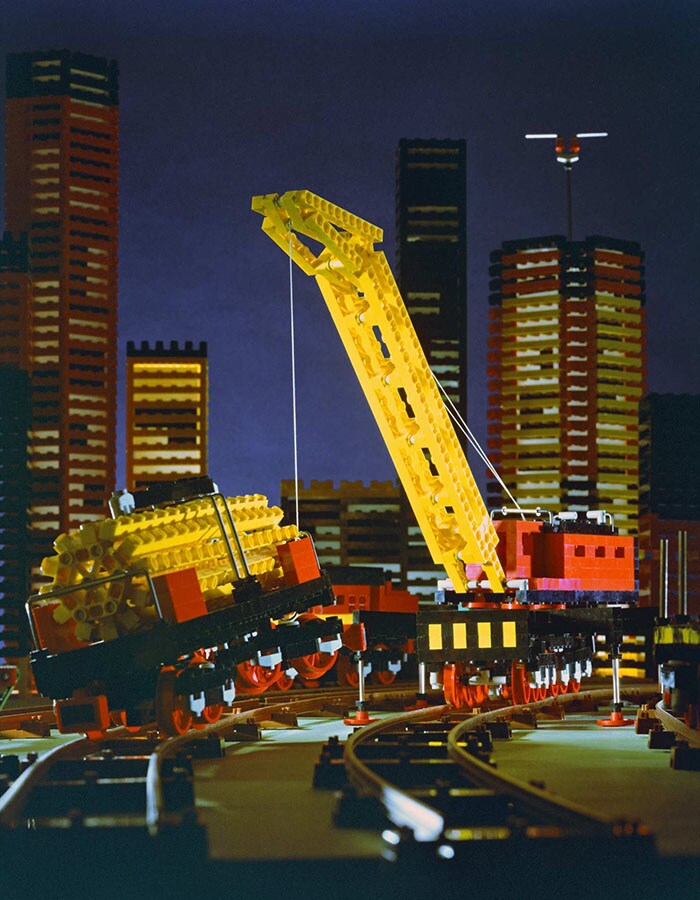
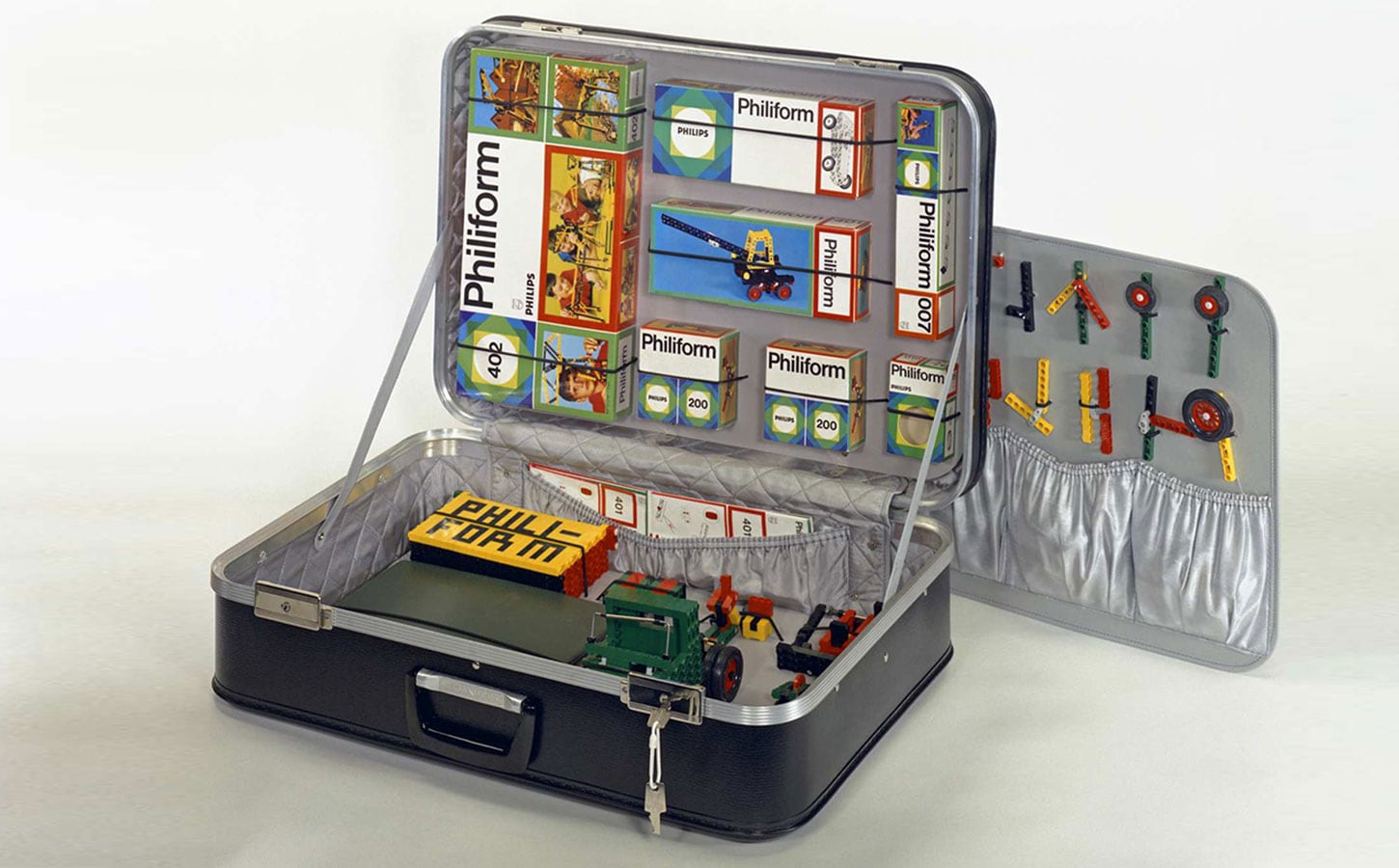
Philiform includes simple building kits for younger children and more complex ones for older ones. Using blocks, strips, triangles, hexagons, wheels, connectors, axles and motors, you can build a complete city with moving cranes and bridges, with motorised trucks, planes, boats and even trains complete with rails. Philiform combines well with the Mechanical and Electrical Engineer building sets.
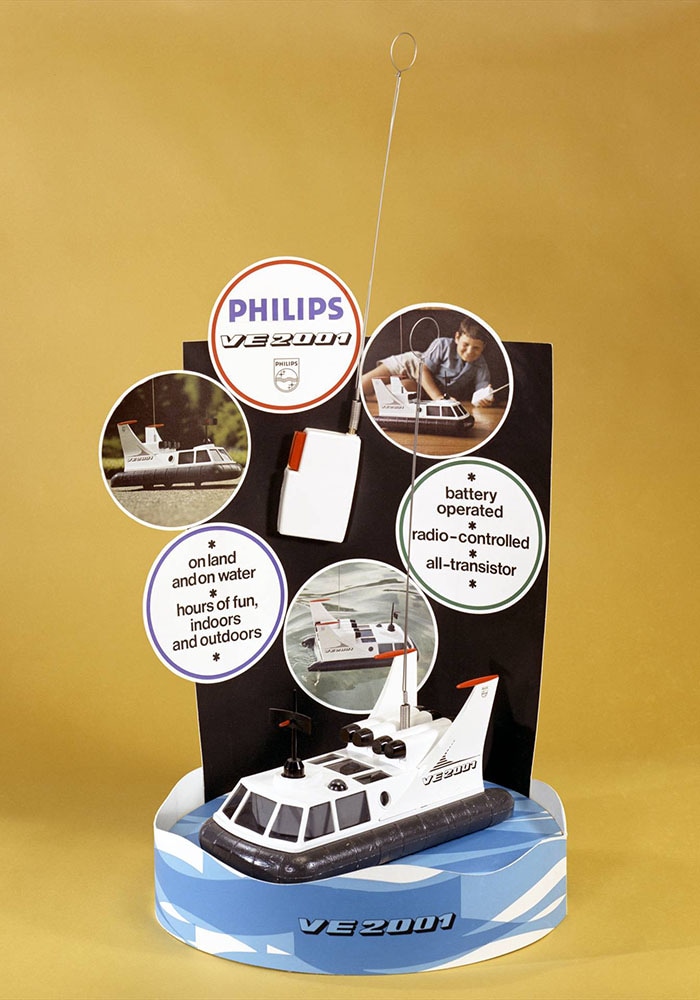
Between 1968 and 1974, in addition to remote-controlled model vehicles such as a hovercraft, a coast guard boat and a red sports car, Philips launches an electronic organ that allows children to compose their own music.
Philips’ construction and experimentation sets have been named toy of the year several times, praised for learning the secrets of technology in an entertaining way. Philiform disappears from the market after a few years. Philips produces the experiment kits well into the 1980s. The kits even find their way into technical education. In this way, Philips' toys inspire many young people for a future in engineering.
Museum Kids Factory
With Museum Kids Factory in the Philips Museum, Philips continues to inspire children for a future in engineering. Museum Kids Factory is a craft workshop for children where they learn more about technology through play. They get to work and learn about mechanics and (for older children) simple electronics. The younger children (6 and 7 years old) get to tinker with various materials and glue gun. The older children (8 to 12 years) may also solder, saw and drill.
Text: Miriam Lengová, Philips Company Archives
Source: Philips Company Archives
Copyright: Koninklijke Philips N.V.

